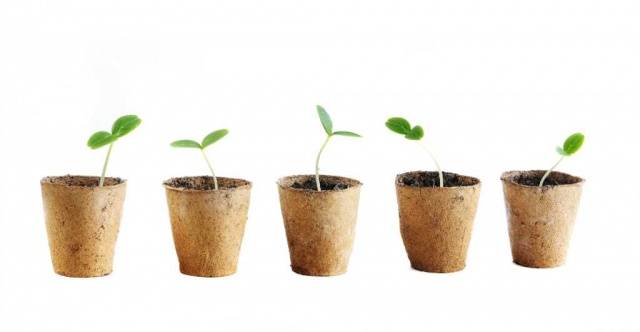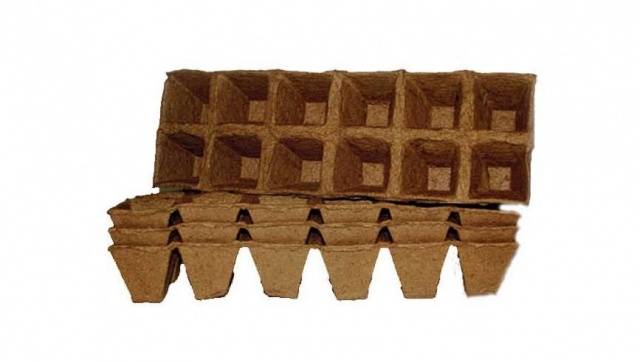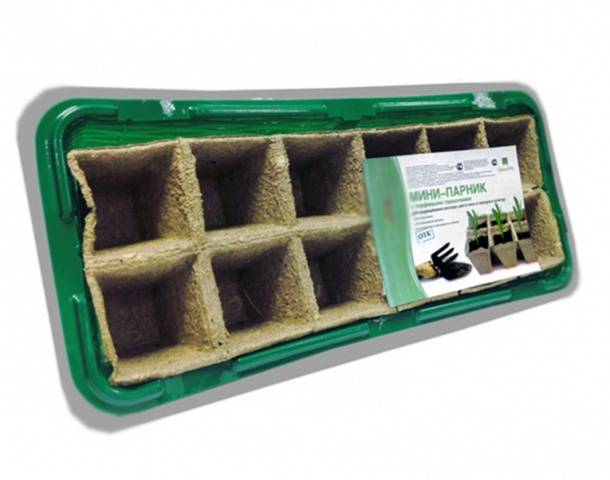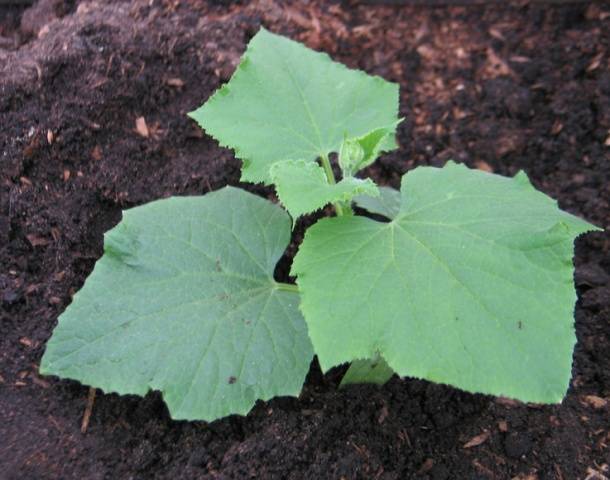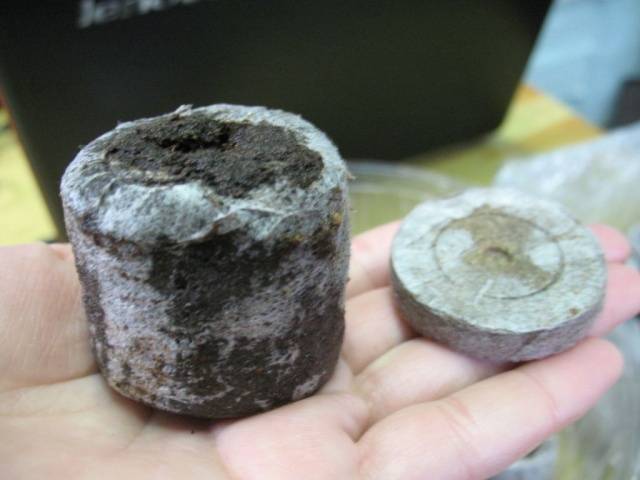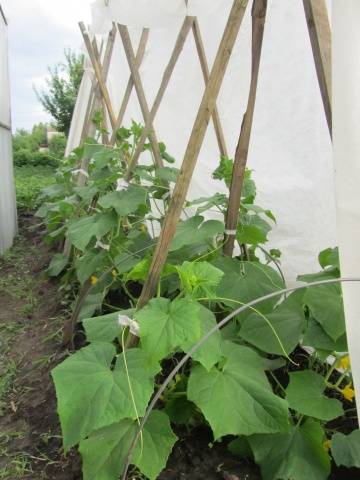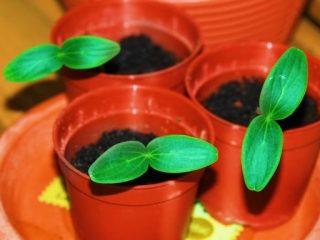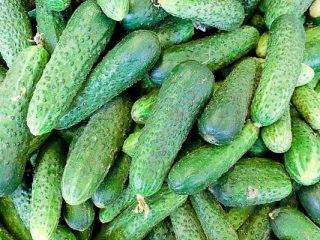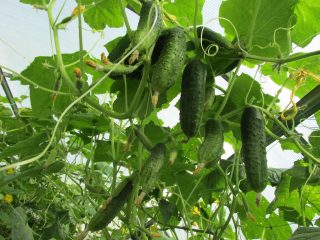Content
The idea of using a one-time self-decaying container for seedlings of cucumbers and other garden plants with a long growing season has been in the air for a long time, but was realized 35-40 years ago. Seedlings develop in peat pots under conditions of increased aeration of the root system. Peat tablets appeared on the market later, but they are no less known.
Benefits of growing seedlings in peat pots
The seedling method of growing cucumbers for the gardener brings the time for obtaining the first fruits by at least 2 weeks. Transplanting young plants are painful, so the seedlings are grown in peat pots, and peat tablets are the only possible way to transfer a plant with a lump of earth to open ground without disturbing the underdeveloped roots.
For the manufacture of peat pots, high-moor peat is reinforced with ground recycled cardboard in a ratio of 70% of the natural component, 30% of the auxiliary one. An increase in the proportion of cardboard leads to strengthening and cheaper production, but the seedlings of cucumbers with overgrown roots are not able to break through the dense cardboard walls.
Why do gardeners choose cucumber seedlings for forcing?
- Air permeability of peat - the soil is aerated from the side of the walls;
- Peat is a natural mineral fertilizer;
- Stability of conical pots;
- An abundance of standard sizes, the selection of cassettes for a mini-greenhouse is facilitated;
- Plants are planted in a pot.
Seed preparation
Concerns about the new harvest of next year begin in the summer: lovers of their own seeds select large cucumber fruits without visible flaws for growing seed plants on the lashes that are ahead in growth and development. The preparation of your own seed material is justified: it becomes possible to select large seeds that will give strong viable seedlings. Engage in breeding work, improve the quality of the variety, yield.
Hybrid varieties of cucumbers with the letter F1 are not capable of producing full-fledged seeds with full preservation of the properties of the variety. Every year you will have to buy more seeds - the rejection of small seeds is justified. Seedlings lagging behind in development will give weak plants, unable to bring a bountiful harvest.
Long before the onset planting seedlings of cucumbers the sizing of the seed is carried out. Saturated salt solution is an unmistakable indicator for checking seed density. Floated seeds are mercilessly discarded. Seeds must be checked for germination. Seeds of each variety are selected and germinated. Based on the test results, a conclusion is made about the suitability of the batch for planting. Seeds with a germination rate of less than 90% do not differ in viability, they will fail.
Soil preparation
Ready-made soil mixtures do not tempt the sophisticated gardener. The peat-based substrate is not compacted, breathable, able to feed seedlings, but poor in minerals. A mixture of several components with the obligatory addition of ripe humus from your own site will allow you to get strong seedlings of cucumbers.
The components are mixed and decontaminated. Pathogenic microflora, larvae and ovipositor of insects capable of eating up roots are destroyed by pouring boiling water or frying in the oven.The substrate, ready to receive the seeds, is cooled, moistened and filled in the peat pots.
Peat mixtures are characterized by an acidic environment, and cucumber seedlings prefer a neutral or slightly alkaline soil reaction. The addition of crushed chalk or lime will correct the situation. Watering with hard water is possible: add a pinch of chalk to the water to be irrigated.
Soil for cucumber seedlings:
We plant seeds for seedlings
The timing of sowing seeds in peat pots is determined by the feasibility of plant protection on the site during changes in daily temperatures, cold snaps. A stationary greenhouse or a reliable greenhouse allows sowing seeds for distilling seedlings in early April, so that in a month hardened cucumber seedlings grow in protected ground.
Disinfection of cucumber seeds is traditionally carried out using manganese sour potassium. Dissolve 2 g of potassium permanganate in 200 g of warm water. Each batch of seeds is kept in solution for 20-30 minutes. After this procedure, the seeds are rinsed in running water.
Sprout cucumber seeds on saucers in a damp cloth or paper napkins. A vessel with water is placed next to it. A feeding wick is placed in each saucer from it so that the seeds do not dry out and do not end up under a layer of water. Seeds that have not sprouted within 3 days are removed.
Forcing cucumber seedlings in a mini greenhouse
A dilemma arises: the seedling of cucumbers is painfully tolerant of transplantation, so it is advisable to plant the germinated seeds in a permanent place in peat pots with a volume of 0.7–0.9 liters, where it will develop branched roots in a month of growth in unrestricted conditions.
Practice has shown that a mini-greenhouse with cassette rectangular peat pots creates acceptable conditions for the development of cucumber seedlings, significantly saves space. Through the glassy plastic cover, it is convenient to control the growth and moisture of the plantings.
The final transplant into pots of a size suitable for root development is painless due to the preservation of the integrity of the earth lump on the roots.
At the bottom of the container of the mini-greenhouse, drainage from washed river sand or expanded clay is laid, preventing waterlogging of the substrate, 1 cm high. The bottoms of peat pots are perforated. The pots are filled with soil by 2/3 of the volume. Sprouted seeds are placed in holes 1.5 cm deep, the substrate is slightly compacted. No lighting is required before germination. The recommended room temperature is 20-25 degrees.
The appearance of the first shoots signals that it is time to allocate space on the windowsill. In cloudy weather and on the northern windows, additional lighting is required so that the cucumber seedlings do not stretch out. Mini-greenhouse, grown seedlings in peat pots are turned 180 degrees daily.
Drip watering is desirable, loosening of cucumber seedlings is carried out with caution every 2-3 days. As the plants grow, precipitation and soil compaction, the substrate is poured until the pot is full. After the leaves unfold, the cover of the mini-greenhouse is removed, the plants are hardened at room temperature.
Transplant into pots of increased volume
Transplanting cucumber seedlings into spacious pots is not technically difficult, but the weakness of the roots and the content of the cardboard in the walls of the peat pots require the following manipulations:
- The bottom of the smaller pot is cut off;
- The side walls are cut in height from edge to edge.
Due to the breathable structure of peat, evaporation does not only occur from the surface of the substrate. And moisture evaporates from the walls of the pots, which leads to overdrying of the soil. Excessive watering of plants causes the opposite effect - the walls of the pot become moldy. Experienced gardeners fill the voids around the peat tanks with a neutral, non-moisture-consuming substrate. Wood sawdust and soil residues are suitable materials that come in handy for improving the soil on a cucumber ridge.
The final transplanting of cucumber seedlings into a greenhouse or open ground follows the same scheme with dissecting the walls and removing the bottom. It is impossible to determine the ratio of the composition of a mixture of peat and cardboard by eye, and risking the development and growth of plant roots is excessive arrogance.
Seedling of cucumbers, planting in a greenhouse:
Peat tablets
Peat tablets are used for growing most types of vegetables through seedlings. A disk made of pressed peat with a thickness of 8–10 mm and a diameter of 27–70 mm with a depression for seeds increases in volume by 5–7 times, swelling when wet. The growth of volume goes vertically, in the horizontal direction is held by the mesh.
Peat tablets are adapted for forcing seedlings of various crops. The gardener chooses the acidity of the substrate from acidic to slightly alkaline. Conclusion: the substrate is suitable for growing cucumber seedlings. Impregnation of peat tablets with a balanced composition of complex fertilizers increases the value of the substrate.
In mini-greenhouses, cucumber seedlings are grown in small peat tablets with subsequent transplantation into a spacious pot with prepared soil. In the homogeneous air-permeable structure of the tablet, the roots of the plant grow freely.
Transplanting cucumber seedlings into the ground is non-traumatic for the roots: the mesh reliably holds the lump of the substrate. It is worth considering purchasing peat tablets. Such comfortable conditions for the development of roots in other soil cannot be achieved.
We plant cucumbers in peat tablets:
Conclusion
Plastic pots and containers are strong, durable. But environmentally friendly materials based on high-moor peat for growing cucumber seedlings are in constant demand among gardeners. The reason is known.
